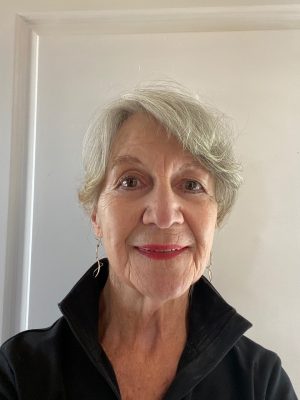 “What does beauty mean to you?” asked Madalena Miera of her group of Middle and High School girls in Taos Behavioral Health’s (TBH) SUCCESS program. Awkward silence.
“What does beauty mean to you?” asked Madalena Miera of her group of Middle and High School girls in Taos Behavioral Health’s (TBH) SUCCESS program. Awkward silence.
Choosing not to return to the classroom
Miera, the Training and Coordinated Community Support Services (CCSS) director for TBH was leading her girls through a series of self-reflective exercises around health, body image and self-confidence. She had ample reason to do so. When the schools offered students the opportunity to return to the classroom and face to face learning, 100 percent of the girls in the SUCCESS program chose to stay in the virtual model supported by clinical and CCSS services in TBH. When questioned about their decision, the answers were very revealing.
Expressing their Opinions
“This is my safe place” said one. Another commented that the TBH staff supported her in her failures and celebrated her success. “I can be who I really am here,” said another. Of most concern and useful in shaping program activities were repeated comments that the girls in middle school experienced sexual bullying often aimed at their physical appearance. In the girls’ group at SUCCESS, they felt their authentic selves were accepted.
Miera subsequently shaped a series of exercises to reinforce the goals of the SUCCESS program: S-Students
U-Using
C-Confidence
C-Courage and
E-Emotional
S-Support for
S-SUCCESS
Self-Reflections
Miera first asked the girls to write down the negative things they thought about/said to themselves. These papers were passed around in the group and read aloud. Shock and familiar thoughts surfaced. Then each girl wrote her name on a paper which was passed around the group with every member writing something positive about that person. Each girl then read the comments made about her starting with the “I am” phrase– with surprise and gratitude. There were big smiles all around!
Miera led the group through a discussion of intention and self- care. You would rarely say negative things to the person sitting beside you—why should you do it to yourself? Comments were made about the typical unhealthy actions the girls took: failing to take showers and keep clean, starving oneself or eating unhealthy foods, committing self-harm acts such as cutting, and carrying on an inner dialogue of self-criticism. Why should you be mean and ugly to yourself when you wouldn’t do it to your neighbor?
What is Beauty?
In the next activity, the group discussed the meaning of beauty. In response to a question of “What makes one beautiful?” only two physical characteristics were mentioned: your smile or your hair. But they felt a person was beautiful by the way they treated others. Next, they had an opportunity to comb through a collection of National Geographic magazines to select examples of beauty. When the choices were reviewed, it was striking that all the examples expressed ideas of caring for others, showing kindness, and treating others with respect. They selected photos of old women with vibrant loving smiles, people helping each other in activities and special achievements such as Jane Goodall’s work to save the wild Gorillas. Everyone then made a collage of the chosen photos to keep alive their commitment that beauty was not in physical appearance, but in the way you talk to others and show your love in your behavior.
As a final gesture, the girls declared “Leave these photos up so the boys can see them!”
TBH has the largest credentialed and licensed behavioral health staff in northern New Mexico. We can be reached for scheduled appointments at 105 Bertha St. or 575-758-4297 or at www.taosbehavioralhealth.org
Mary McPhail Gray, PhD. Is the Co-Chair of the TBH Board and can be reached at 575-779-3126 or at mcphailconsulting@gmail.com.

